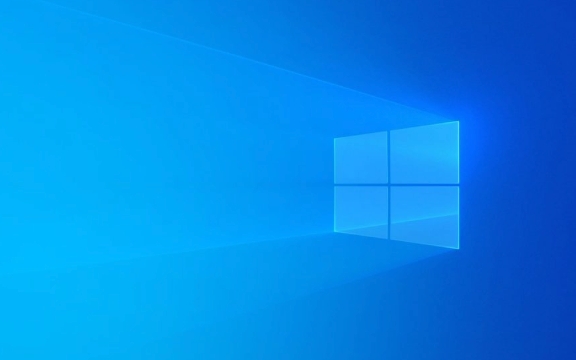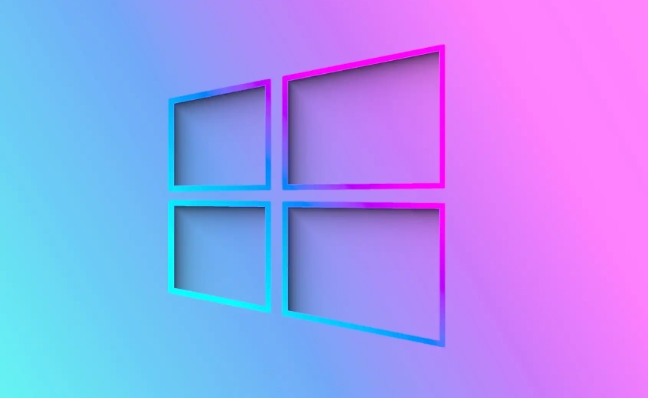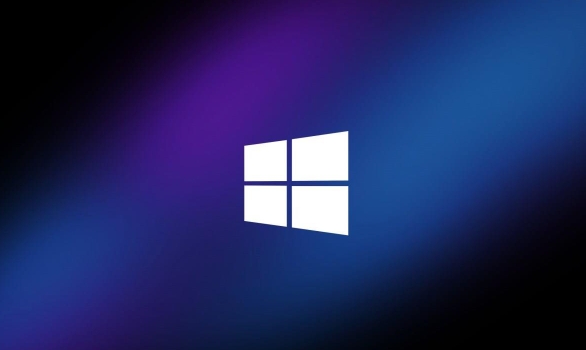A loud Windows laptop fan is often caused by high CPU/GPU usage, dust buildup, poor airflow, or power settings. To fix it: 1. Check Task Manager for high resource usage and close unnecessary apps. 2. Clean vents with compressed air and ensure proper airflow. 3. Switch to Balanced or Power Saver mode to reduce heat. 4. Disable unnecessary startup programs to lower system load. Addressing these areas typically reduces fan noise effectively.

If your Windows laptop fan is constantly running loud, you’re not alone — it’s a common issue, especially with laptops that get heavy use. The good news is that a noisy fan doesn’t always mean a broken one. Often, it’s just working overtime due to heat buildup or performance demands. Let’s break down why this happens and what you can do about it.

Check for High CPU or GPU Usage
One of the most common reasons for a loud fan is high CPU or GPU usage. When your system is under load — like when you're gaming, editing video, or running a browser with dozens of tabs — the processor and graphics card generate more heat. In response, the fan spins faster to cool things down.
You can check this in Task Manager:

- Press
Ctrl Shift Escto open Task Manager - Go to the "Performance" tab
- Look at CPU, Memory, and GPU usage graphs
If any of them are consistently near 100%, that’s likely the culprit. Try closing unnecessary apps or browser tabs. Also, check for background processes like Windows updates or antivirus scans that might be using system resources without you realizing it.
Clean the Vents and Make Sure Airflow Isn’t Blocked
Even if your system isn’t under heavy load, a loud fan might just mean your laptop is getting hotter than it should. Dust buildup in the vents or fans is a common cause. Over time, dust acts like insulation, trapping heat inside the chassis.

Here’s what you can do:
- Turn off and unplug your laptop
- Use compressed air to gently blow out dust from the vents
- Avoid using a vacuum — it can create static electricity that might damage components
- Make sure you’re using the laptop on a hard, flat surface (not on a bed or couch)
Also, don’t stack books or other items next to your laptop while it’s running — airflow matters more than most people realize.
Adjust Power Settings to Reduce Heat
Windows has different power modes — like Balanced, Power Saver, and High Performance. If you’re using High Performance, your laptop will prioritize speed over power efficiency, which can cause more heat and louder fans.
To adjust this:
- Click the battery icon in the taskbar
- Select a different power plan, like Balanced or Power Saver
- Or customize your current plan to lower processor performance when on battery or plugged in
Some laptops also come with their own power or performance control apps (like Lenovo Vantage or Dell Power Manager), so check if your manufacturer offers a tool that gives you more granular control.
Consider Background Software and Startup Programs
Some apps run quietly in the background and can cause high system usage without you knowing. Browsers, especially Chrome, are notorious for this — especially if you have extensions running or multiple tabs open.
You can also check startup programs:
- Open Task Manager
- Go to the "Startup" tab
- Disable unnecessary programs that launch when you boot up
This won’t always fix the fan noise directly, but it can reduce overall system load and help keep things cooler.
A loud fan on your Windows laptop is usually a sign, not a sentence. It tells you something’s making your system work harder than it should — whether that’s dust, software, or performance settings. By checking usage, cleaning vents, adjusting power plans, and managing background apps, you can often bring things back to a quieter state.
It’s not complicated, but it does take a little time and attention — and sometimes a can of compressed air.
The above is the detailed content of My Windows laptop fan is constantly running loud. For more information, please follow other related articles on the PHP Chinese website!

Hot AI Tools

Undress AI Tool
Undress images for free

Undresser.AI Undress
AI-powered app for creating realistic nude photos

AI Clothes Remover
Online AI tool for removing clothes from photos.

Clothoff.io
AI clothes remover

Video Face Swap
Swap faces in any video effortlessly with our completely free AI face swap tool!

Hot Article

Hot Tools

Notepad++7.3.1
Easy-to-use and free code editor

SublimeText3 Chinese version
Chinese version, very easy to use

Zend Studio 13.0.1
Powerful PHP integrated development environment

Dreamweaver CS6
Visual web development tools

SublimeText3 Mac version
God-level code editing software (SublimeText3)
 How to Change Font Color on Desktop Icons (Windows 11)
Jul 07, 2025 pm 12:07 PM
How to Change Font Color on Desktop Icons (Windows 11)
Jul 07, 2025 pm 12:07 PM
If you're having trouble reading your desktop icons' text or simply want to personalize your desktop look, you may be looking for a way to change the font color on desktop icons in Windows 11. Unfortunately, Windows 11 doesn't offer an easy built-in
 Fixed Windows 11 Google Chrome not opening
Jul 08, 2025 pm 02:36 PM
Fixed Windows 11 Google Chrome not opening
Jul 08, 2025 pm 02:36 PM
Fixed Windows 11 Google Chrome not opening Google Chrome is the most popular browser right now, but even it sometimes requires help to open on Windows. Then follow the on-screen instructions to complete the process. After completing the above steps, launch Google Chrome again to see if it works properly now. 5. Delete Chrome User Profile If you are still having problems, it may be time to delete Chrome User Profile. This will delete all your personal information, so be sure to back up all relevant data. Typically, you delete the Chrome user profile through the browser itself. But given that you can't open it, here's another way: Turn on Windo
 How to fix second monitor not detected in Windows?
Jul 12, 2025 am 02:27 AM
How to fix second monitor not detected in Windows?
Jul 12, 2025 am 02:27 AM
When Windows cannot detect a second monitor, first check whether the physical connection is normal, including power supply, cable plug-in and interface compatibility, and try to replace the cable or adapter; secondly, update or reinstall the graphics card driver through the Device Manager, and roll back the driver version if necessary; then manually click "Detection" in the display settings to identify the monitor to confirm whether it is correctly identified by the system; finally check whether the monitor input source is switched to the corresponding interface, and confirm whether the graphics card output port connected to the cable is correct. Following the above steps to check in turn, most dual-screen recognition problems can usually be solved.
 Want to Build an Everyday Work Desktop? Get a Mini PC Instead
Jul 08, 2025 am 06:03 AM
Want to Build an Everyday Work Desktop? Get a Mini PC Instead
Jul 08, 2025 am 06:03 AM
Mini PCs have undergone
 Fixed the failure to upload files in Windows Google Chrome
Jul 08, 2025 pm 02:33 PM
Fixed the failure to upload files in Windows Google Chrome
Jul 08, 2025 pm 02:33 PM
Have problems uploading files in Google Chrome? This may be annoying, right? Whether you are attaching documents to emails, sharing images on social media, or submitting important files for work or school, a smooth file upload process is crucial. So, it can be frustrating if your file uploads continue to fail in Chrome on Windows PC. If you're not ready to give up your favorite browser, here are some tips for fixes that can't upload files on Windows Google Chrome 1. Start with Universal Repair Before we learn about any advanced troubleshooting tips, it's best to try some of the basic solutions mentioned below. Troubleshooting Internet connection issues: Internet connection
 How to clear the print queue in Windows?
Jul 11, 2025 am 02:19 AM
How to clear the print queue in Windows?
Jul 11, 2025 am 02:19 AM
When encountering the problem of printing task stuck, clearing the print queue and restarting the PrintSpooler service is an effective solution. First, open the "Device and Printer" interface to find the corresponding printer, right-click the task and select "Cancel" to clear a single task, or click "Cancel all documents" to clear the queue at one time; if the queue is inaccessible, press Win R to enter services.msc to open the service list, find "PrintSpooler" and stop it before starting the service. If necessary, you can manually delete the residual files under the C:\Windows\System32\spool\PRINTERS path to completely solve the problem.
 How to run Command Prompt as an administrator in Windows 10?
Jul 05, 2025 am 02:31 AM
How to run Command Prompt as an administrator in Windows 10?
Jul 05, 2025 am 02:31 AM
To run command prompts as administrator, the most direct way is to search through the Start menu and right-click "Run as administrator"; secondly, use the Win X shortcut menu to select "Command Prompt (Administrator)" or "Windows Terminal (Administrator)"; you can also open the run window through Win R and enter cmd and press Ctrl Shift Enter to force running as administrator; in addition, you can set shortcut properties to achieve automatic running as administrator. All the above methods require administrator permission and confirmation through UAC. Pay attention to security risks during operation.







